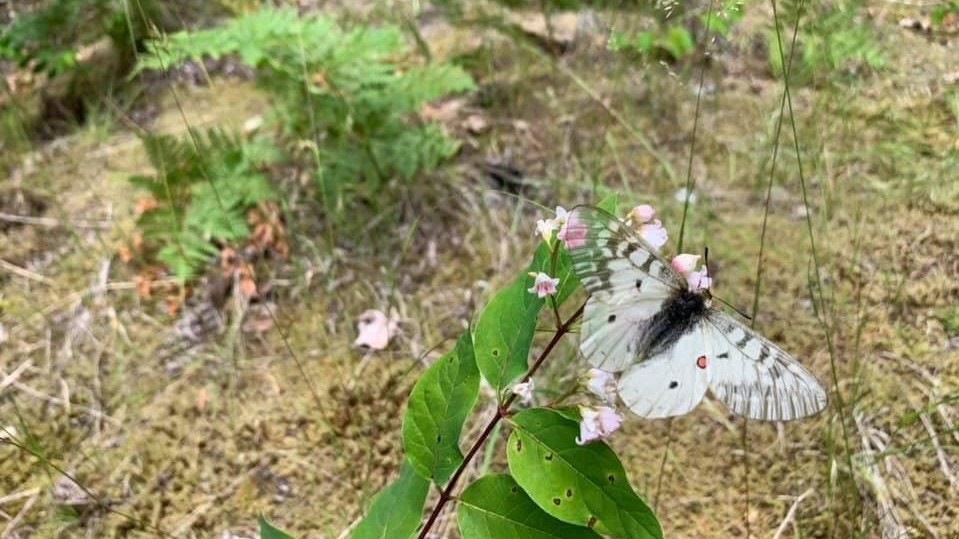New Westminster is a great place to be a BIMBY.
The David Suzuki Foundation’s Butterflies in My Backyard (BIMBY) citizen science project is recruiting volunteers to help find butterflies in British Columbia. BIMBY is an ongoing effort to track the abundance and diversity of butterflies in B.C.
“I think New West is a beautiful city to be a part of this,” said Winnie Hwo, project lead for BIMBY. “There’s just so much potential.”
The David Suzuki Foundation is recruiting volunteers to help document butterfly species in their communities starting in April. On April 9, BIMBY volunteers will be trained to use iNaturalist (an app that allows people to identify plant, animal and insect species with smartphones and record info for researchers and other citizen scientists).
Hwo said a couple of New West residents participated in last year’s BIMBY project, and others are invited to join in on the BIMBY “great B.C. butterfly search.”
“Your setting is just so great, and there are so many areas to go look for butterflies,” she said. “This is not very difficult to do this. All we need you to do is bring phone out to take photos.”
Last year, more than 160 Lower Mainland volunteers joined the project, making hundreds of observations and documenting 47 butterfly species in Metro Vancouver. This year, the BIMBY project is recruiting volunteers from throughout the province and is hoping to get 1,000 volunteers on board.
Hwo said the best months for spotting butterflies are June and July, and they’re usually seen on hot and sunny days.
“Last year we started seeing tortoiseshell butterflies in early March,” she added. “We ask our BIMBY volunteers to start tracking from March to the end of October. Especially for B.C., we really do have early spring. Butterflies, I am sure that they will be showing up pretty soon.”
Hwo said people don’t need to be butterfly experts to volunteer with BIMBY, but it would be helpful if they familiarize themselves with some of the more popular butterfly species. She said the iNaturalist website is very educational and has photos of all of the butterflies that have been submitted by volunteers.
“This year it is the great B.C. butterfly search,” she said. “Knowing the potential of the interest of all the people who love butterflies and like taking photos and submitting to iNaturalist, we think we have a huge potential to get everybody together and then see what kind of butterflies are showing up.”
The David Suzuki Foundation is hosting the BIMBY campaign on the iNaturalist platform, in partnership with UBC zoologist Michelle Tseng and UBC Botanical Garden associate director Tara Moreau.
According to UBC’s E-Fauna B.C. website, at least 184 butterfly species can be found in the province, the most diverse in the country. Tseng said the latest data also shows 10 out of 19 endangered insects in B.C. are butterflies.
Butterflies in B.C., like other wild pollinators, are threatened by pesticides, climate change and habitat loss, stated the David Suzuki Foundation.
“Butterflies in B.C. seems to be one of the top ones,” Hwo said. “I think that gives a more urgent need for us to see what kind of species are still showing up.”
The BIMBY project team hopes the data that’s collected in 2022 will help present a clearer picture of B.C. butterfly health and will help inform conservation efforts.
Apart from using citizen science to create a baseline and document butterfly abundance and diversity in B.C., Moreau said that it’s important to see how this work can help to halt the loss of biodiversity and prevent extinction of species in B.C.
“These are the big global biodiversity goals for the next decade, and it would be great to showcase how we can connect baselining butterflies to halting their extinction,” she said in a news release.
Protecting habitat
Municipalities can play a role protecting habitat for butterflies in a number of ways, said Hwo.
“We need to make sure that our municipalities are not using pesticides,” she said. “Pesticides are bad for pollinators regardless – a butterfly or other insects.”
Working on climate change solutions and planning urban areas in a manner that ensures they’re habitable for butterflies and bees are among the ways municipalities can support pollinators, said Hwo.
“We have a lot of land development in the Lower Mainland and across the province as well,” she said. “I think that if our planners could actually think of a way, when we develop to house human beings, we also have (to keep) our pollinators in mind – so if development could be pollinator-friendly and butterfly-friendly.”
Several pollinator gardens have been created in New Westminster – and that’s a good thing.
“That will provide the food and shelter for them,” Hwo said.
Municipalities and residents can support pollinators and butterflies by considering the types of plants they plant, said Hwo, noting medium-sized shrubs and larger plants provide shelter where butterflies can lay eggs.
“One other popular thing that we ask people to do is to keep their lawns messy,” she said. “You don’t need to them them looking pristine all the time. When they are messy, when the fallen leaves are down, often they are places where butterflies lay eggs.”
For more information about the BIMBY program, go to www.davidsuzuki.org and search for BIMBY.


